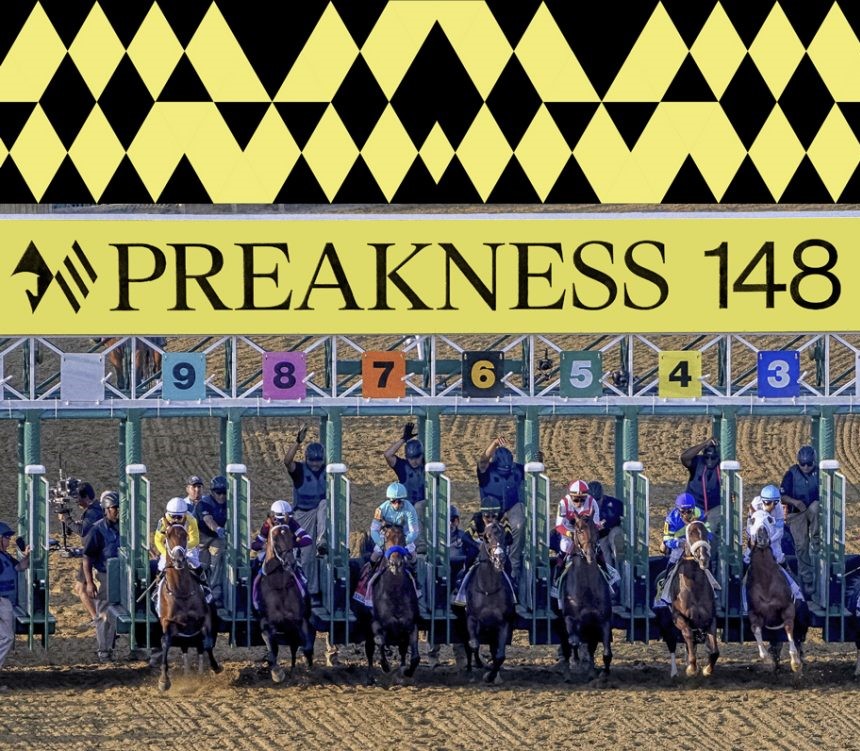
Taking a break from the recycling world, here’s a little local lore about Maryland’s most famous horse race and celebrations. The middle jewel in the Triple Crown, the Preakness, runs right here in Baltimore.
And they’re off!
The Second Jewel in the Triple Crown
Charles Halton of the New York Times coined the term “Triple Crown” in 1930. The horse Gallant Fox won all three of the races: The Kentucky Derby, The Preakness and The Belmont Stakes. However, the first horse to do so was Sir Barton in 1919. He was officially recognized as the first Triple Crown winner in 1948. The last Triple Crown winner was Affirmed in 1978.
The longest period without a winner was between 1948 and 1973. It’s been 50 years since Secretariat broke that streak. While there were three Triple Crown winners in the 1970’s, 37 years passed until American Pharoah won in 2015 and three years later, Justify.
How Did Pimlico Get Its Name?
The racetrack’s name, Pimlico, is of obscure origin. It has been linked to Sir Walter Raleigh’s unsuccessful attempts at establishing English settlements the 1580’s. Another explanation is that it derives from a Native American tribe who called their lands “Pra-qua-les” which means “quail woods.” The colt that won the first race at Pimlico was named Preakness. The farm where he was born, was located in “quail woods.”
According to Wikipedia, English settlers in Maryland named the area in honor of Olde Ben Pimlico’s Tavern in London. Most agree that Pimlico is Native American. How “old Ben” got the last name of “Pimlico” is anyone’s guess, but there is a metro stop in London named “Pimlico.”
The track is nicknamed “Old Hilltop” because of a small rise in the infield.
A Boastful Governor
Pimlico racetrack opened in 1870 with the first running of the Dinner Party Stakes. Maryland Governor Oden Bowie boasted at a dinner party in Sarasota, FL, that Maryland would have a quality racetrack and offered a purse of $15,000, quite a sum at the time.
Although Gov. Bowie’s horse came in last in the 1873 race, he still got to name what would become the second jewel in the Triple Crown. He named the race “Preakness” after the colt that had won the Dinner Party Stakes at Pimlico’s opening in 1870. The Dinner Party Stakes still run annually at Pimlico.
On Again, Off Again
Although government shutdowns are no news these days, on October 24, 1877, the United States Congress shut down for a day – unheard of at that time – so members could attend a 2 ½ mile match race at Pimlico between the Kentucky Derby and Preakness champions. An unknown gelding named “Parole” won.
Due to financial difficulties, the Preakness was run in Morris Park, NY in 1890 and was not run at all in 1891, 1892 and 1893. From 1894-1908, the Preakness was run in Brooklyn, NY. It did not return to Baltimore until 1909.
The Weather Vane
Unique to the Preakness is the famed historic weather vane, a tradition since the Preakness’s return to Baltimore in 1909. The weather vane sat atop of the Member’s Clubhouse. When it was destroyed by fire in 1966, a replica of the building’s cupola was built to stand in the winner’s circle in the infield. According to the official Preakness site, “As soon as the Preakness winner has been declared, a painter climbs a ladder to the top and applies the colors of the victorious owner’s silks on the jockey and horse which are part of the weather vane.”
A Signature Drink
In addition, to their colors on the vane, the winner is draped with a blanket of Maryland’s state flower, the “Black-eyed Susan.” However, because the State flower doesn’t bloom until June, it’s actually made of Viking poms. In the past, daisies with their centers painted black were used.
The signature drink of the Preakness is also named after the State flower. Unlike the Derby’s mint julep, which was probably introduced in the eighteenth century and became the office Derby drink in 1938, the Black-eyed Susan is a newcomer, invented in 1973. Unlike the historic mint julep the Black-eyed Susan and is a fruity mix of vodka, bourbon, peach, orange and sour mix.
The Crab Derby
After a five year hiatus, another unique-to-Maryland event is back. The Crab Derby dates back to 1857 when two Lexington Market vendors argued about who had the fastest crab. Must have been a slow day – ha ha. This year’s event will have eight sponsored crabs from Faidley’s Seafood. They will race down a custom track which has water incorporated into its design.
So fix yourself a Black-eyed Susan, don a fancy hat and tune in for the 148th running of the Preakness Stakes. Post time is scheduled for 6:50 pm DST.
Sources: Fox Sports, Bet Now & Wikipedia


